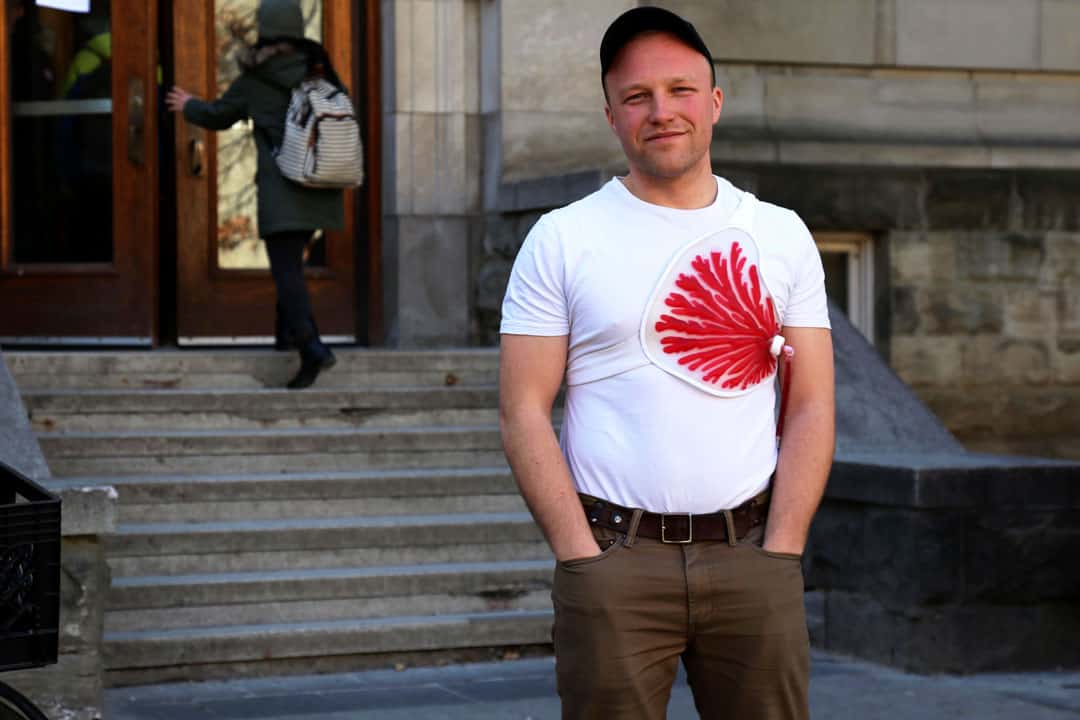The Shape of Water, with an astonishing 13 Oscar nominations, took home the prize for Best Picture at this year’s Academy Awards. The movie, centring around the unique bond between a mute custodian and a humanoid sea creature in the Cold War era, has close ties to Toronto. While familiar Toronto locations like Massey Hall and the Andrews Building at UTSC make an appearance in the film, the role of one U of T student in the film’s production is worthy to note as well.
The Varsity had the opportunity to meet Charles Katrycz, a Master of Engineering candidate at U of T, who was on the team at camera and prop manufacturer Walter Klassen FX that worked on prop production for the film. Together, they built the tank that transported the sea creature. We spoke with Katrycz about his role as a member of the production team, his career as an engineer, and his experience as a student.
The Varsity: Can you tell us about yourself, your area of study, as well as your career in engineering and design so far?
Charles Katrycz: I have been an MEng student at U of T for about six months, and I did my undergrad in physics at McGill. I worked in between for about six years and did a wide range of things, but if there was something central, it was that I explored different ways of making things. I started out doing carpentry and home renovations, so I was always involved in design and fabrication. Making things was important, but I was interested in the physics behind the processes. When building a home, I thought about the thermal flux of energy and how that could be mitigated in new buildings. Then I started building my own devices that were based on physical processes. I was always trying to come up with ways of making things.
TV: How did you decide to stop working for a while before pursuing your MEng?
CK: In the process of making things, I realized the process required a better understanding from me to be able to model it, understand it, and use it in a more precise way.
TV: How did you end up working at Walter Klassen?
CK: Things began with me doing experiments in my basement while working as a carpenter. In that time, I developed a process for making wearable thermal garments that pump fluid to my skin and then away. In that process, it absorbs or delivers heat to my body. This was the focus for me — I was very excited about the physics behind these designs. It was done in a way that allowed the material to merge into a shape. While I was working on this I got into wearable technology and the applications of this processes. I ended up doing an artist’s residency at Autodesk in San Francisco. While I was there I learned a lot about digital fabrication. Working with them, I developed a skill for different kinds of fabrication techniques and ended up coming back to Toronto looking for work in that kind of studio environment. Then I learned about Walter Klassen props in the east end of Toronto. It was a really magical place as it had some 30 odd years of movie history.
TV: How did you come to be involved in The Shape of Water?
CK: The first day I came in to Walter Klassen, they had this great big steel scaffold with some styrofoam positioned on it and said that they were making this tank. They told me that it was for The Shape of Water and that Guillermo del Toro was the director, so I was excited right off the bat to be working on a movie that I would like to watch. The title of the film ended up being relevant because all I had been doing was working with fluids and creating shapes with it. I thought that was serendipity in a sense. I ended up helping build this tank with about 10 other people. That was a four- to five-month period where I got to apply a lot of my skills, but it wasn’t somewhere where I got a creative spark to design myself. It was a great experience and now, two years later, I’m able to say, “Wow this movie just won Best Picture!”
TV: Can you tell us more about the process behind building the tank? How was it like collaborating with the production team as an engineer?
CK: An artistic rendering comes in through a creative director or prop master who will be working for the production company or the director. They ensure that the creative vision is consistent throughout the film, because there are so many people working on the production. For example, the seafoam green colour of the walls in the set had to be the same as the tank that rolls into the set. This colour is a permeating aesthetic. From beginning to end, that colour shows up in the costumes, sets, and props. They’ll ask to see 10 different samples of this seafoam green and pick the one specific shade they want. Once you have an artistic rendering, you have to make a 3D model using computer-aided design (CAD) software. This is used to model the overall the shape and look as well as the mechanical systems. CAD creates a virtual model to make sure that, mechanically, everything makes sense.
This interview has been edited for length and clarity.


